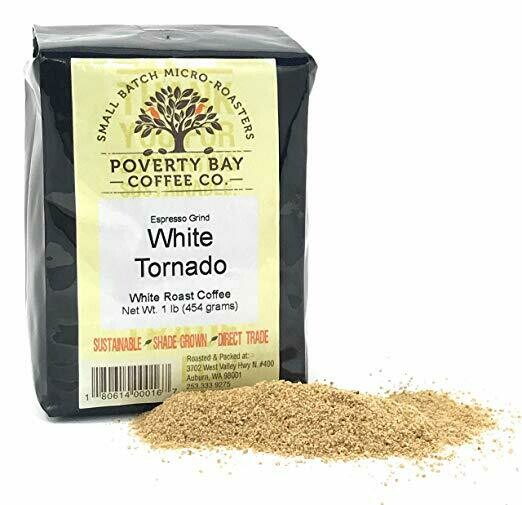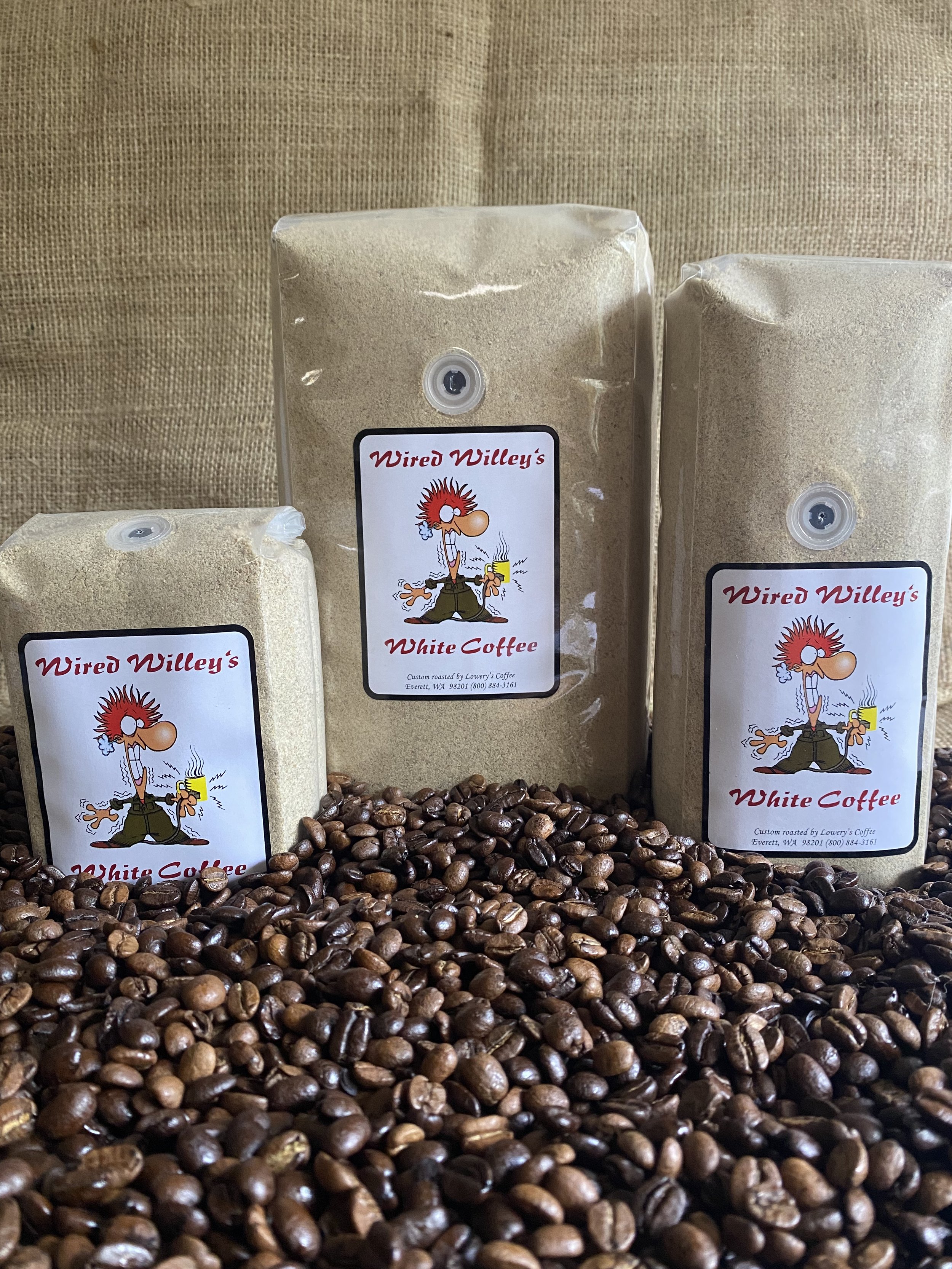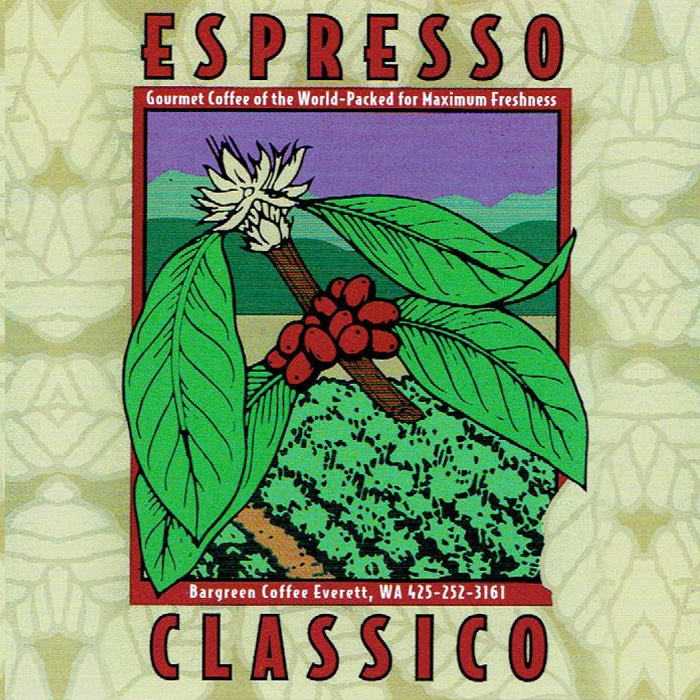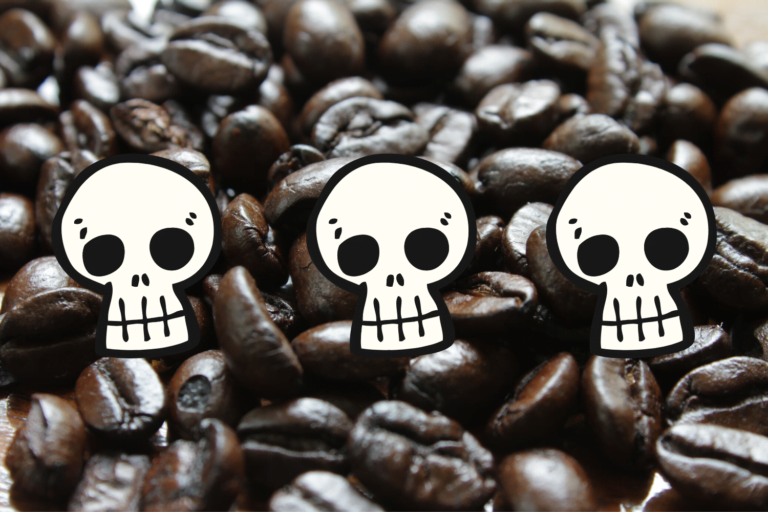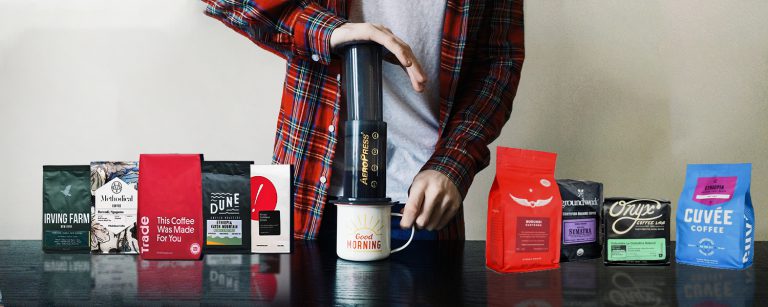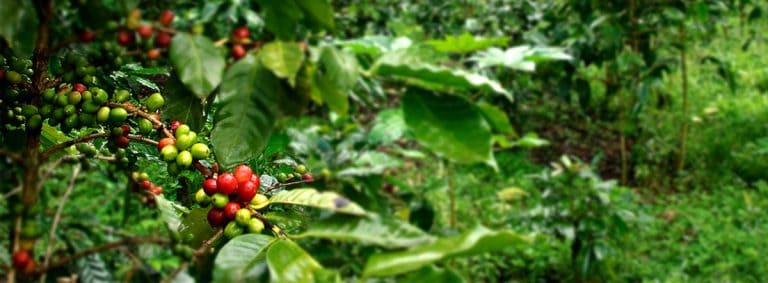White Coffee: A Rising Coffee Trend?
Coffee becomes more interesting these days as more coffee-based beverages are being discovered. The last coffee drink that took the internet by storm was Dalgona coffee, but this time white coffee is taking the spotlight as one of the latest coffee innovations.
Do you think white coffee could replace your regular morning joe? What white coffee brands are worth a try? After searching the internet, here’s what we can share about this type of roast.
What is White Coffee?
White coffee is an under-roasted coffee bean. It is completely different from the flat white -an espresso-based coffee drink. Quite simply, white coffee is brewed using very light roasted coffee beans. White coffee beans are lightly roasted at around 325°F.
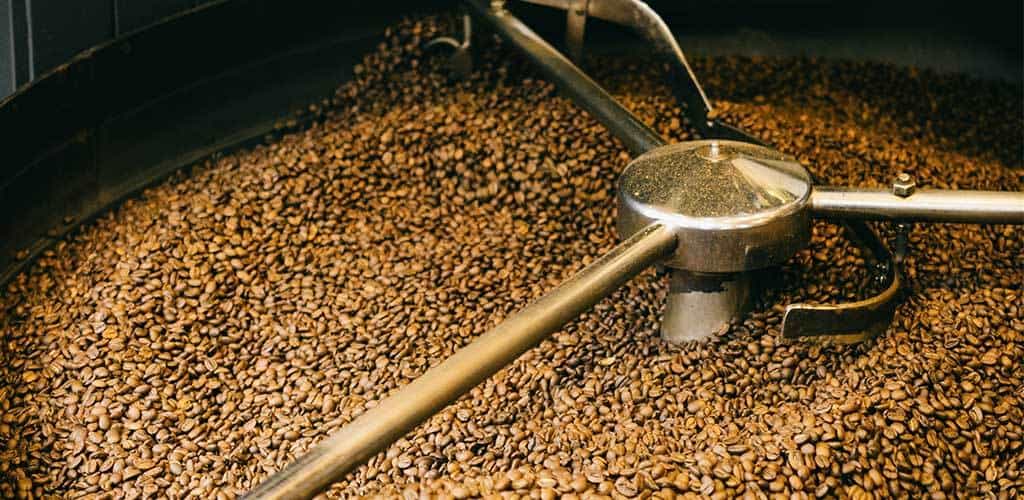
The roasted bean color is not actually “white” but usually appears light beige. Compared to light roast, white coffee’s natural and earthy flavors are more prominent than light roasts. Likewise, it has a higher caffeine content than light, medium, and dark roast because it is roasted for a brief period. If you like light roast coffee for its flavor and caffeine kick, you’ll surely love white coffee for its bursting raw flavors and stimulating caffeine content.
Origins
In many English-speaking countries, people identify white coffee as a coffee beverage with milk or creamer. In New York City, white coffee is offered as ‘coffee light’ while in New England, it is served as ‘light coffee.’ Yet, white coffee in these countries is different from cafe au lait because it uses room temperature milk or creamer while the latter uses steamed or heated milk.
White coffee is a type of roast that is much lighter than the light roast – it’s between green coffee and light roast and can be Robusta or Arabica. However, the coffee bean’s quality is equally essential because it can affect the white coffee’s overall flavor profile.
Drinking white coffee started as part of a century-old tradition in Yemen. It is traditionally served with a Yemenite spice called hawaij (pronounced as ‘huh-why-adge’), which means mixture. Hawaij is a blend of different spices native to Yemen, including clove, cardamom, ginger, and cinnamon.
This Yemenite spice is added to white coffee to enhance the roast’s flavor while enjoying the health benefits it offers. The result of this mixture is a coffee beverage with higher caffeine content, richness in antioxidant, and its infamous beige color.
Malaysia also has a take on white coffee. The coffee beans are also roasted at low temperatures but are accompanied by margarine, wheat, and sugar. Lebanese white coffee is made of water, sugar, and orange blossom water. This coffee drink is believed to create a soothing effect after drinking.
Caffeine Difference
Although coffee generally loses its caffeine content by 70% during roasting, white coffee maintains a caffeine content 50% higher than darker roasts. However, the caffeine levels in coffee beans don’t only depend on the type of roast because beans have different caffeine content varying among varietals.
For instance, an Arabica coffee bean contains 1.9mg of caffeine while a robusta bean has 2.9mg of caffeine. If you’re looking for a white coffee with a caffeine kick that you’ll need for those busy days, you might consider looking for white coffee produced from robusta coffee beans. Yet, if you don’t like your white coffee’s bitterness, go for Arabica white coffee beans.
What is the Difference between Regular and White Coffee?
You can differentiate regular coffee from white coffee in a lot of ways. White coffee beans are harder than regular coffee beans. It’s like grinding pebbles. That’s why you’ll need a commercial-grade grinder to grind white coffee beans. On the other hand, a manual coffee grinder is enough to grind regular coffee beans.
Another point of difference is that white coffee most likely has more caffeine than regular black coffee due to shorter roasting time. Keep in mind that the longer the roasting time of the beans, the more caffeine is lost. When deciding between white coffee and dark roast coffee, if you want to be productive in the morning, take a sip of white coffee.
Likewise, white coffee beans are roasted at temperatures lower than regular coffee, making it rich in chlorogenic acid, an antioxidant that lowers your risk of cardiovascular diseases and human cell oxidation and inflammation.
How to Roast White Coffee?
White coffee is a coffee bean roasted between green and light roast. The roasting process of coffee is divided into several stages, which help determine the coffee bean features, such as body, acidity, mouthfeel, aftertaste, and flavor.
The first stage of roasting is called the endothermic phase, which pertains to drying out the green coffee beans. In this stage, the beans’ color gradually changes to brown with the escape of moisture during the roasting process.
Coffee beans used to brew a regular joe undergo a roasting temperature between 450 to 480 degrees Fahrenheit, while roasting coffee white beans undergo a roasting temperature of around 325 degrees Fahrenheit. It’s lower than the typical regular joe’s roasting temperature turning the coffee beans from green to a lighter whitish color to yellow.
During the roasting process of white coffee, the coffee beans’ natural sugars start to caramelize as the green color shifts to a light tan. White coffee is produced from coffee beans extracted before they approach the “first crack.” Thus the beans are much denser and more rigid than a fully roasted coffee bean.
The beans should be roasted at a much lower temperature for a brief roasting period to ensure that the coffee beans retain their natural nutrients, caffeine content, and chlorogenic acids.
If you were to grind white coffee beans, the most recommended grinder to use is a commercial-grade grinder because your home manual grinder will not stand a chance to crack the beans. However, there are pre-ground white coffee beans that you can buy, so it will not be a big deal if you don’t have a commercial-grade grinder at home.
What does white coffee taste like?
If you love drinking light roast coffee for its earthy flavor, you’ll find a new favorite morning joe in the guise of white coffee. It has a nutty flavor and recognizable fruity notes with hints of slight hay flavor.
Compared to other coffee roasts, white coffee has no bitterness. Yet, it has a slight acidity that is more appealing than regular coffee. You can drink white coffee with or without the spices. However, if you want to elevate your white coffee experience, the hawaij spices’ addition is highly recommended.
If you’d be traveling to the Middle East, you’ll encounter that most coffee served is spiced with hawaij. It goes well with almond milk because the milk amplifies the nuttiness and spiciness of the white coffee.
Best White Coffee Brands
Dare to try something different from your usual joe? Big Cup of Coffee recommends the following white coffee brands.
Poverty Bay
Poverty Bay’s White Tornado has more caffeine than full-roasted coffee beans. It’s an enjoyable coffee drink for its nutty and sweet flavors with a light and mellow finish. This white coffee is available in a unique grind style that suits your brewing preferences.
To know more about Poverty Bay and other coffee blends they offer, check out our Poverty Bay Coffee review here.
The White Tornado is a white coffee product from Poverty Bay Coffee Co., available in 1lb, 2lb, or 5lb bags, specially ground for optimal brewing. It is roasted to 325 degrees, which results in 50% more caffeine compared to fully roasted coffee. The coffee is characterized by a nutty and sweet flavor with a mellow finish.
Lowerys Gourmet: Wired Willey’s White Coffee
Wired Willey’s White coffee is a great roast to try if you want to jumpstart your morning with bursting energy. It has a smooth body, unique nutty flavor, and low acidity. You can drink this coffee blend as your alternative to dark roast coffee if you love coffee with no bitterness. If you are making espresso drinks using this coffee blend, do not tamp.
Wired Willey's White Coffee is a light roast with a smooth, nutty flavor and no bitterness. It is characterized by its high caffeine content and low acidity, making it ideal for those seeking an extra energy boost. This coffee is versatile, suitable for espresso machines, and can also be brewed at home or mixed into other beverages.
Bargreen’s Coffee
Espresso Classico White Coffee by Bargreen’s is a specially roasted gourmet coffee using 100% Arabica coffee beans. It is a fine grind coffee blend with a nutty flavor and zero bitterness. It has a smooth body and low acidity.
The Espresso Classico White Coffee features a light roast that provides a mellow, nutty flavor without bitterness. It is high in caffeine and low in acidity, making it suitable for an extra energy boost. This coffee is ideal for espresso machines, versatile for home brewing, and comes in pre-ground form.
Caffe Appassionato
The Caffe Bianco by Caffe Appassionato is a 100% Arabica white coffee beans. It has a light body, low acidity, and recognizable nutty flavor. If you’ll be brewing this coffee blend in espresso machines, it is best to discard the first shot and use the second shot instead to enjoy a fuller, smoother and flavorful white coffee.
The Caffe Bianco White Coffee is a light-bodied, high-caffeine coffee with a unique nutty flavor, achieved through a specific hand-roasting process. Unlike traditional dark roasts, this white coffee, which is light tan in color, offers a distinctively different taste profile. Its lighter hue and flavor may appeal to those who typically do not enjoy regular coffee.
Frequently Asked Questions (FAQs)
If you have doubts about whether white coffee is worth a try or not, below are some white coffee facts you need to know to get informed.
No. White coffee is much bolder than the other roast, but it is less acidic and has more antioxidants, making white coffee a good, healthy drink for you. In terms of chlorogenic acid content, White coffee contains more than the other roasts because it is roasted halfway. Meaning, it still has good chlorogenic acid.
Chlorogenic acid is responsible for proper glucose regulation in the body, lowering your risk of developing Type 2 diabetes. Likewise, it can alter the body’s meal responsiveness through multiple biochemical mechanisms with chlorogenic acid in the body.
Absolutely! White coffee beans are roasted at a lower temperature in a short period. It’s an “underbaked” because the beans are roasted before it reaches the first crack. You can brew white coffee with espresso machines and other coffee machines that extract coffee for high flavor concentration.
Yes. White coffee is different from Ipoh coffee or Malaysian white coffee in terms of the roasting process. To produce white coffee, the beans are roasted at lower temperatures in a short period. On the other hand, Malaysian white coffee is made from coffee beans roasted and palm oil margarine, sugar, and wheat. It is served with condensed milk and consumed after dinner.
Tannins are compounds found in coffee that cause staining and discoloration in the teeth. According to a study, tannin content is higher the darker the roast is, so we can assume that white coffee will cause less staining in your teeth. However, there’s no specific study yet that compares the tannin content of white coffee with fully roasted coffee to confirm this.
In Summary
White coffee is a coffee innovation worth trying because it widens the horizon on how we can further enjoy coffee in ways that don’t include its trademark flavor: bitter.
Though white coffee is not new – having been served for centuries throughout Middle Eastern households, the experience is still unique with the infusion of the latest techniques and technology in roasting the coffee beans to create the best white coffee brands.
Likewise, white coffee poses many health benefits, which should not be overlooked, especially given the scale of coffee consumption across the globe. It seems right to explore more about the wonders of this type of roast because it caters to people who love coffee and want to be productive but at the same time, don’t enjoy dark, bitter coffee.


